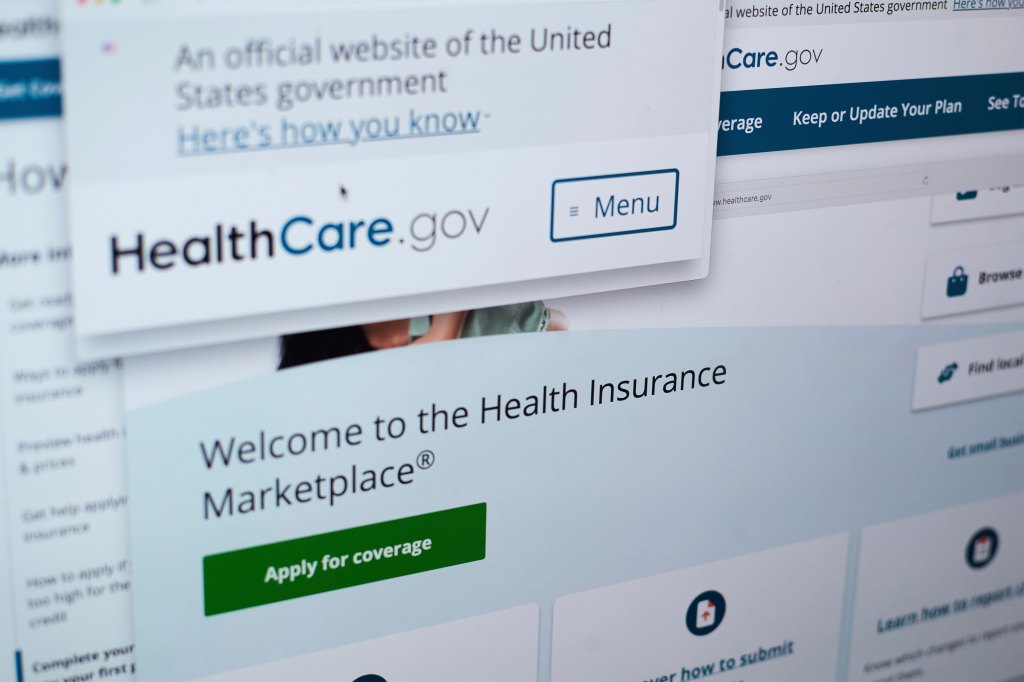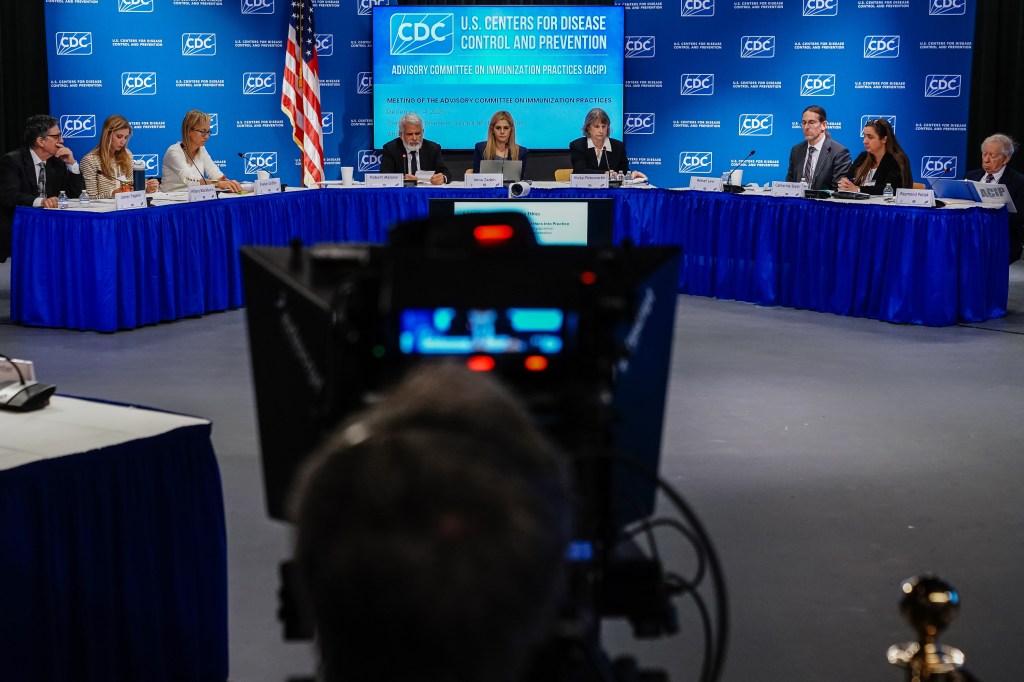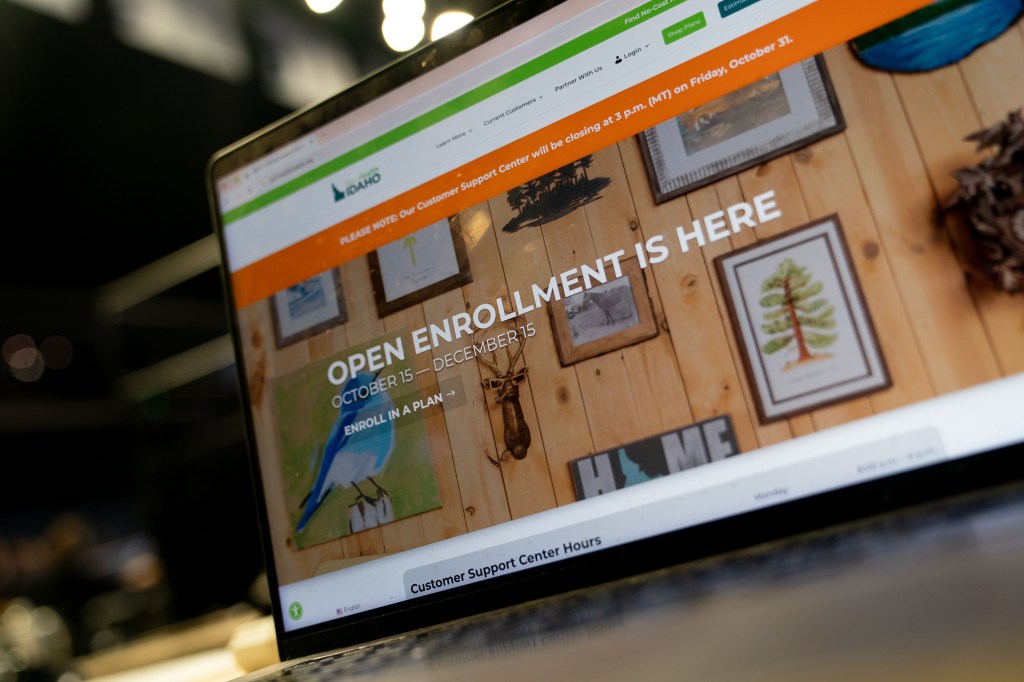One family in Virginia Beach, Virginia, just found out their health plan’s deductible will jump from $800 to $20,000 next year. About 200 miles north, in Maryland, another household learned they’ll pay $500 more monthly to insure their brood in 2026. And thousands of people in Idaho were greeted with insurance rates that’ll cost, on average, $100 more every month.
As shopping season opens for Affordable Care Act plans in some states, customers are confronting staggering costs for their health insurance next year. The extra federal subsidies put in place in 2021 that made coverage more affordable for millions of people will expire at the end of this year unless a gridlocked and idle Congress acts.
With Democratic and Republican lawmakers at an impasse, the federal government shut down on Oct. 1, spurred by the need for an estimated $353 billion over a decade to continue providing enhanced ACA subsidies for roughly 24 million people. Both sides have dug in, with Republicans saying Senate Democrats must vote to reopen the government before they’re willing to negotiate on the ACA’s costs.
If Congress does manage to strike a deal in the coming days or weeks to extend some subsidies, the prices and types of plans available on the online marketplaces could change dramatically, bringing unprecedented uncertainty and upheaval to this year’s open enrollment, which begins in most states on Nov. 1.
Michele Eberle, executive director of the Maryland Health Benefit Exchange, the state-run marketplace, is gaming out strategies should that happen, including the possibility of pausing enrollment so her 200-person team can update the plans to reflect any changes, should Congress pass a new bill on ACA subsidies.
“We will do whatever it takes to make sure we can provide Marylanders with the most affordable health coverage,” Eberle said. “The mechanics of how that gets done, we don’t really know until we figure out what Congress might do.”
“I think everyone realizes that, depending on what happens, we just can’t flip a switch overnight,” she added.
Exchange customers in Maryland can expect to pay, on average, about 35% more next year, even with help from the state, which agreed to offer backup subsidies should the federal government’s discounts expire at the end of this year. Eberle said notices of premium hikes — which assumed the federal subsidies would expire — already were sent to mailboxes and inboxes. One middle-income family of four in the state, for example, will see their monthly premiums go from $916 to $1,427.
People living in most states still use healthcare.gov, the federal marketplace, to enroll in coverage. The Centers for Medicare & Medicaid Services, which oversees the federal exchange, declined to answer questions about how quickly the agency could pivot on any changes Congress may make after sign-ups start.
“CMS does not speculate on potential Congressional action,” Health and Human Services spokesperson Emily Hilliard said in an email.
Like other states that run their own ACA exchanges, California has sent letters to policyholders with information about their 2026 coverage, with costs calculated under the assumption that the subsidies would expire.
But the California exchange team, too, devised backup plans to contact policyholders and revamp its online marketplace if Congress acts before year’s end.
“At no point is it too late,” said Jessica Altman, executive director of Covered California, the state’s exchange. “We are ready to move any mountain we can possibly move to make any changes as quickly as we possibly can.”
It could take about a week to reprogram the site to reflect prices that factor in more generous subsidies, if Congress were to approve them exactly as they currently are, Altman said.
States may also have to update premiums themselves to reflect new rates. Most insurers submitted two sets of premium rates to states this year in case Congress agreed to extend the subsidies.
Right now, many shoppers are seeing the set of higher rates that insurers plan to charge if the subsidies expire.
Insurers say it is necessary to raise premiums without the subsidies because they anticipate healthier, younger people will drop coverage rather than pay more. That would leave insurers with a sicker, older pool of people to cover.
If a subsidy deal is reached, insurers could lower the premiums.
The complications don’t end there.
If Congress passes a subsidy deal after customers have started picking plans, people might see the new prices and want to reconsider the type of coverage for which they already signed up. Enrollees may change plans as long as enrollment is open, through Jan. 15 in most states.
Dozens of insurers offer ACA plans across the country. Those plans range widely in the doctors or medications they cover, as well as how much customers contribute in copays, the fees owed for medical services, and deductibles, the out-of-pocket amount paid before insurers pitch in.
Some people might be willing to pay a higher monthly premium in exchange for a lower deductible. Others, especially those who don’t expect to incur major medical bills, might risk a higher deductible to keep monthly premium payments lower.
In Virginia, some customers are being presented with strikingly high deductibles for next year, said Deepak Madala, the director of Enroll Virginia, which assists people with enrolling in coverage.
He said he’s helping one family in Virginia Beach facing a jump in premium costs from $70 to about $280 a month.
To buy a plan at a similar price, the family, with a household income of about $60,000, would need to look at coverage that carries a deductible of $20,000 or more, he said. Right now, their deductible is $800.
With premiums and deductibles that high, some customers might rethink coverage entirely, he said.
They’re deciding whether “to go without or switch to a plan with a very high deductible,” Madala said of ACA customers’ options.
Pennsylvania’s state-based exchange, which last week started sending out notices detailing 2026 rates, estimates a 102% increase in premiums for its roughly 500,000 customers. About a third of customers are expected to drop coverage, said Devon Trolley, executive director of the Pennsylvania Health Insurance Exchange Authority.
The timing of any subsidy deal reached by Congress is most precarious, though, for the roughly 135,000 Idahoans enrolled in ACA coverage.
That’s because their state opened enrollment on Oct. 15, weeks before the rest of the country — and it will end earlier, on Dec. 15.
With ACA enrollees facing average increases of 75% for coverage costs, about 20% are expected to drop out of the marketplace, said Pat Kelly, executive director of Your Health Idaho, the state exchange.
Idaho is prepared to revamp its website if anything changes on the subsidies — a process that could take days — and has “notices ready to go” to inform policyholders of additional savings, Kelly said.
“We would work to do it as quickly as possible, and make sure it is done right,” he said, adding that factors such as the day of the week or proximity to the Thanksgiving holiday could add time.
If Congress waited to act until the federal subsidies expire on Dec. 31 — the date Republican House Speaker Mike Johnson has repeatedly raised as the deadline for a deal — it would be too late for people in Idaho.
“We would run out of open enrollment, and there would not be enough time to make changes,” Kelly said of any congressional deals reached after mid-December.
KFF Health News is a national newsroom that produces in-depth journalism about health issues and is one of the core operating programs at KFF—an independent source of health policy research, polling, and journalism. Learn more about KFF.
USE OUR CONTENT
This story can be republished for free (details).









